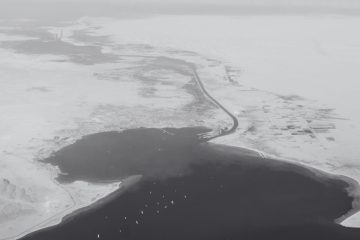What Happened On July 2nd?
July 2, 1843, seemed like any other summer day in Charleston, South Carolina. However, by afternoon, dark clouds gathered over the city, foretelling a severe thunderstorm. Now, what happened next was far from ordinary. Amidst the storm’s fury, an alligator fell from the sky.
Charleston Braces For A ‘Gator-ific” Storm
Temperatures soared that day, pressing the heavy air down on the city. By mid-afternoon, the sky turned a shade of gray, and the first rumbles of thunder echoed across the rooftops. Residents hurried to close their windows and secure their belongings, preparing for a typical summer storm. However, this storm would prove anything but typical.
A Gator From The Heavens
As the storm raged, witnesses reported seeing a small alligator fall from the sky. This unusual occurrence quickly drew the attention of many locals, who were both astonished and puzzled by the event.
Waterspout Wonders?
The most plausible explanation for this strange incident involves a waterspout. Waterspouts are tornado-like columns of wind that form over bodies of water and can lift objects, including small animals, into the air. It is believed that a waterspout formed over a nearby river, picked up the alligator, and carried it over Charleston before the winds weakened, causing the animal to fall.

Gator Gossip
Local newspapers reported the event. The Charleston Mercury noted the incident, describing the peculiarity of an alligator falling from the sky. The alligator, about two feet long, fascinated and puzzled residents, leading to much speculation about the unusual capabilities of natural phenomena.
Waterspout Mechanics
Waterspouts form when a column of rotating air descends from a cloud and touches the water surface. This can occur under specific conditions: warm temperatures, high humidity, and unstable air. The updraft within a waterspout can be strong enough to lift light objects, and in some cases, even small animals such as fish, frogs, and, as witnessed in Charleston, an alligator.
The vortex of a waterspout can reach speeds of up to 150 miles per hour, creating a strong lifting force. Objects trapped in this vortex can be carried hundreds of feet into the air. While it is rare for larger animals to be lifted, it is not entirely impossible given the right circumstances and the strength of the waterspout.
Gator In The Air!
Dr. Ernest Agee, a meteorologist, explains that while waterspouts typically transport smaller objects, larger animals could also be lifted if the conditions are particularly strong. The dynamics of waterspouts allow for the lifting of small animals like frogs and fish, but larger objects such as small alligators can also be carried if the updraft is powerful enough.

Reports of frogs and fish raining down from the sky have been documented worldwide, suggesting that waterspouts can indeed carry some what heavy loads. In rare cases, even larger animals could be lifted and transported over short distances. The Charleston incident serves as an unusual yet plausible example of nature’s unpredictable power.
The Alligator’s Fate
According to the historical accounts, the alligator survived its fall, and there were no reports of casualties among the residents of Charleston. The incident, while shocking, resulted in no injuries to people or damage to property. The alligator, after being examined, was likely relocated to a more suitable environment.
Sky-Falling Gators
The incident provided valuable insights into the dynamics of waterspouts and their impact on wildlife. Modern radar and satellite systems can now detect waterspouts more accurately, providing early warnings and potentially preventing similar incidents. Charleston’s airborne alligator remains a reminder of nature’s capacity to surprise and astonish.





